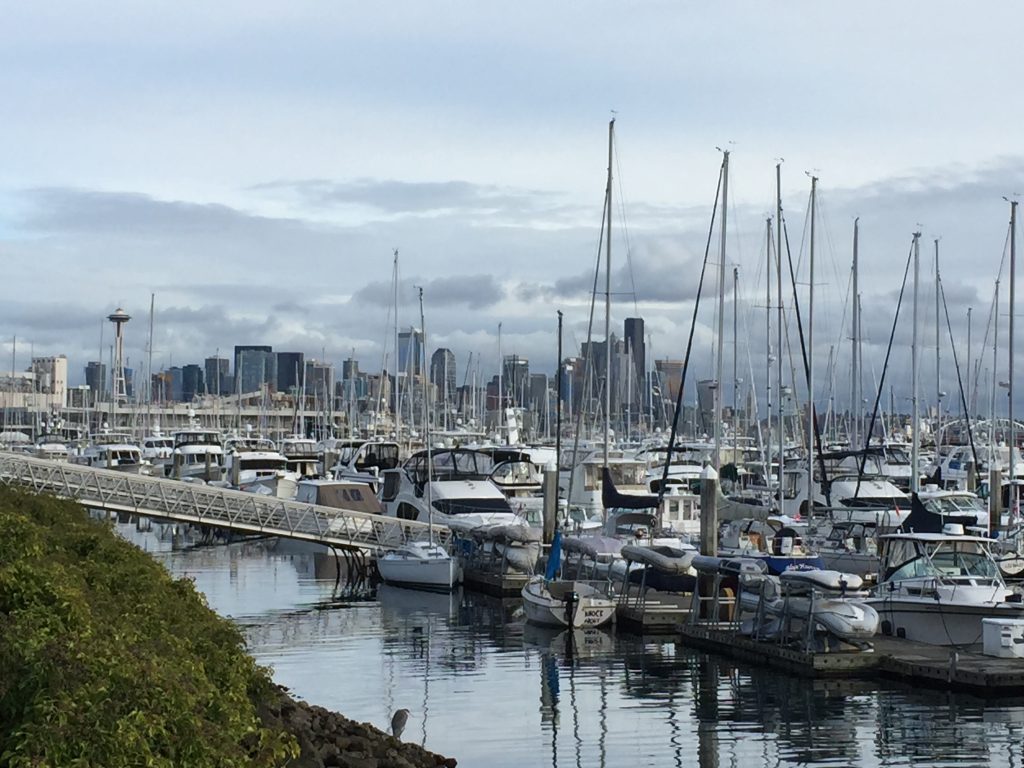Washington State’s Boat Fleet – 2016
In 2016 alone, 5,750 new vessels worth $234 million were added to the 205,694 registered vessels in Washington’s 2.63 billion dollar boating fleet. The marina industry and state marine recreation agencies and consultants need accurate, geographically specific fleet information to respond to changing vessel moorage and sanitation needs in a growing industry.
For more detailed information, see the companion 2016 Boat Fleet Characteristics Excel spreadsheet that organizes the fleet data by geographically-specific boat characteristics and ownership information.
 Size of Fleet
Size of Fleet
Washington’s boating fleet in August 2016 comprised 205,694 registered vessels. However, there are 59,601 vessels whose registrations expired on June 30, 2016 and many of these could rejoin the fleet during the current (2016-17) year.
Value of the Fleet
Applying the Department of Revenue’s depreciation schedule to the price paid for the vessel by its current owner and the number of years owned, the total value of the current fleet is $2.63 billion. The real value is higher since the almost 60,000 vessels that were registered in 2015, but not renewed, have a depreciated value of $243 million. Based on lien documentation, 13.5% of boats are being financed.
Age of Fleet
The median age of vessels in the fleet is 20 years, based on their model year, 2017 being the youngest. In other words 50% of the fleet has a model year 1997 or older, 50% 1997 or more recent. There are large differences when hull material is considered, however. Almost 50% of wooden-hulled vessels are over 50 years old, whereas only 3% and 1.7% of aluminum and plastic hulls respectively exceed an age of 50 years.
Geographic Distribution of Vessels
The fleet is split 74% – 26% between Western and Eastern Washington. Counties bordering Puget Sound account for 65% of the state’s fleet. The eight-county Seattle–Tacoma–Olympia Combined Statistical Area (CSA), the metropolitan core of the region, houses over 57% of the state total. East of the mountains Benton, Franklin and Spokane, the counties containing the Tri-Cities (Kennewick, Pasco and Richland) and Spokane account for 11% of the statewide fleet.
Ownership
Of the total fleet ownership 99% live in Washington. Out-of-state owners live in 805 towns and cities from every other state in the union. California, Oregon, Arizona, Idaho, Texas and Colorado owners are the most heavily represented in the fleet.
Vessel Characteristics
Length
The median length of all vessels in the fleet is 18’.
Type
Runabouts dominate the fleet accounting for 64% of all vessels, followed by cabin cruisers (12%), and personal watercraft (10%). Sailboats are the smallest category with a little over 5% of the total.
Hull material
Plastic – including fiberglass – is far and away the most popular hull material comprising 68% of all vessels. Aluminum, at 29%, is number two. Wood, rubber, steel and concrete (ferro-cement) account for the remaining 3% of identified materials.
Propulsion
Outboards and outdrives are first and second in this category, followed by inboard engines, powering 47%, 21% and 17% of boats respectively. Jet (10%) and sail (3%) power the rest of the fleet.
Fuel
Gasoline engines power 92% of the fleet with diesel a distant second at 6.4%. Electric, sail and other power sources each account for less than 1%.
Summary
The most representative boat in the Washington fleet is an 18′ plastic-hulled runabout powered by one or more gasoline outboard motors and used for pleasure.
A Changing Fleet
When we compare the characteristics of the current fleet with those of the new boats that entered the fleet over the last twelve months there are some remarkable differences. But, because the number of new boats is small compared to the fleet (5,750 versus 205,694, or 2.8%) it will take many years to change the fleet characteristics in significant ways.
Hull Material
Aluminum hulls gained in their share by 16.6 percentage points while plastic lost share by 17.4 percentage points.
Boat Type
Personal Watercraft gained 11.9 percentage points at the expense of cabin cruisers (-6.5% points), runabouts (-6.8% points) and sailboats (-4.1% points).
Propulsion
Jet and outboard motors gained 11.3 and 9.1% points respectively; outdrive propulsion lost 14.7% points of their share while inboard engines lost 5.1% and sail 2.3% points.
Length Classes
Vessels from 27′ to 70′ all lost share by margins of 0.02% (67′-70′) to 1.3% points (35′-38′). Better than 4% gains are seen in smallest length classes (<10′, 11′-14′) but 15′-18′ saw a steep loss of share (-8.9% points).